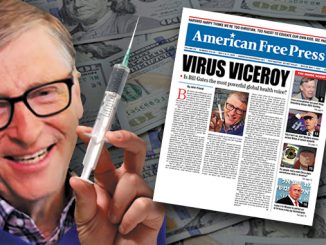
By S.T. Patrick
What began in the spring with the sudden paralysis of two Sudanese children, ages three and four, has now turned into a polio outbreak in Sudan. A week after the World Health Organization (WHO) declared Africa free of the wild polio virus, UN health officials are now tracing the Sudanese outbreak to what the Associated Press called a “vaccine-sparked epidemic” in Chad. According to the WHO, the cVDPV2 polio virus (a different strain than the wild polio virus) is now also spreading through Chad and Cameroon. Genetic sequencing conducted by WHO investigators has found that the cases in Sudan, Chad, and Cameroon are all linked to vaccine doses from October 2019. Between Aug. 9 (declared by the WHO to be “Day Zero” of the outbreak) and Aug. 26, 13 cases have arisen in the region.
According to a Sept. 1 statement from the WHO, the risk assessment of potential spread across central Africa and the Horn of Africa is “high.” The same report states that 172 cases have been reported across Africa in 2020 alone in 14 countries including Nigeria, Zambia, Congo, and Angola. South Sudan had not reported a case since 2009, yet the fear among health officials is a rapid spread. The WHO has pointed out that for every reported case, there are also many cases that go unreported. It also warns that polio can spread quickly in contaminated water with the most dangerous effects impacting children under five years of age.
To combat an outbreak after the cases of paralysis were investigated, and due to coronavirus fears, the WHO in April halted its polio immunization campaigns in 38 countries, many in Africa. There were already qualified suspicions that the paralysis was caused by the oral vaccine, but the WHO was also reacting to the leading side effect of the polio vaccine, that being polio itself.
“Sudan remains at high risk of further virus spread because of large numbers of people moving throughout the country,” said Dr. Ni’ma Saeed Abid, the WHO’s representative in Sudan. “There are large numbers of internally displaced persons moving from areas of conflict in a number of states, in addition to frequent movement between neighboring countries. The polio program has also worked to map nomadic populations, who are also considered at risk, to ensure that they can be reached with the vaccine during the campaign.”
Africa isn’t the only continent currently affected by polio. Pakistan and Afghanistan are also struggling with a rise in cases. In 2019, the two countries combined reported 116 cases of wild polio virus.
Americans following the story have grasped onto the problematic oral vaccines that the WHO openly admits caused the new outbreak. Those vaccines are from the Bill & Melinda Gates Foundation’s global vaccination program. It appears to be one of the first times—if not the first time—that the WHO has openly admitted that an outbreak is “vaccine-sparked” (or “vaccine-induced”). Ethiopia and India have both ordered tens of thousands of vials of the vaccine to be destroyed.
It is important to define words at this time so that we can avoid the use of loaded language. The WHO’s definition of an “outbreak” is “the occurrence of disease cases in excess of normal expectancy. The number of cases varies according to the disease-causing agent, and the size and type of previous and existing exposure to the agent.” The Centers for Disease Control and Prevention (CDC) states, “[The term] ‘epidemic’ refers to an increase, often sudden, in the number of cases of a disease above what is normally expected in that population in that area. ‘Outbreak’ carries the same definition of epidemic but is often used for a more limited geographic area.” Thus, neither an outbreak nor an epidemic requires numbers to be in the thousands or tens of thousands.
It does appear, however, that polio is on the rise in Africa and Asia, according to WHO numbers and CDC concerns, but it is not yet ravaging countries. Most of the vaccination programs in countries with the most limited access to health professionals have worked. The oral vaccine causing the cVDPV2 outbreaks did not work to an acceptable standard.
The fears in America are timely. Millions of people are awaiting the public accessibility of a Covid-19 vaccine, one that the Bill and Melinda Gates Foundation will most likely have some hand in, whether through manufacturing or distribution.
There are legitimate reasons to question the role of the Gates and their foundation in health crises. There are legitimate reasons to question the safety of and greater reliance on mass vaccination programs that target humans from the cradle to the grave. But the world has become more transient, voluntarily and involuntarily. More people are coming into contact with other people from far-flung nations.

Most vaccinations that are used today have limited the massive potential for infectious contaminations that would have otherwise occurred in this super-connected era. Still, we must all be wary of the potential problems associated with vaccines, especially ones that have been rushed at warp speed past strict testing regimens. Vaccines can come with some very serious side effects.
S.T. Patrick holds degrees in both journalism and social studies education. He spent 10 years as an educator and now hosts the “Midnight Writer News Show.” His email is [email protected]. He is also an occasional contributor to TBR history magazine and the current managing editor of Deep Truth Journal (DTJ), a new conspiracy-focused publication available from the AFP Online Store.






